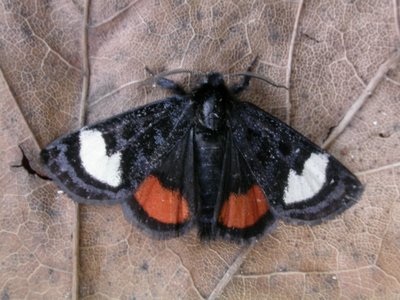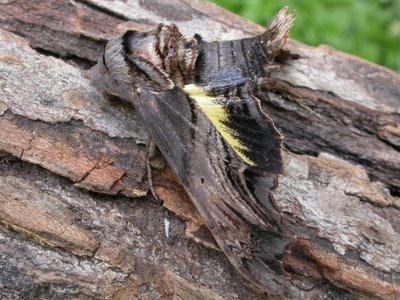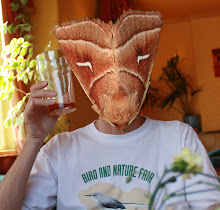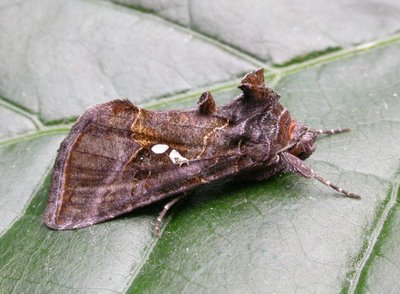Yesterday we all travelled down to South Walsingham and the home of Mary Gartshore and Peter Carson with the aim of buying a few plants and (me) looking for some early flying moths. Was a glorious day though was a little on the cloudy and windy side at times. Whilst KT, Sally and Elden checked out the greenhouses James and I took the net for a walk. Was generally a bit quiet at first but, amazingly, the very first butterfly we saw was a pristine Gray Hairstreak - the earliest I've ever seen! Presumably it hatched locally?
However, what I really wanted to see was a smart dayflying moth called the Grapevine Epimenis. I'd only seen it once before and needed to photograph it. Anyway, whilst photographing the Hairstreak I noticed one fly by...but too fast for me and I couldn't net it in spite of a long chase. Oh well. But, as luck would have it, I spotted another one a couple of hours later fluttering up against one of the greenhouses being buffeted by the wind. Aha, no escape this time and the moth was safely trousered, lightly chilled and then photographed. Unfortunately the results were not great since I'd neglected to bring along the plate so I could attach the camera to the tripod. Hand-help shots at one eighth of a second are not recommended!
Whatever, I hope you like the pix. The prairie was full of bird sound with lots of Chipping, Vesper and Field Sparrows singing. The woods held Rose-breasted Grosbeak, White-crowned Sparrows and Eastern Towhees.

A wonderfully fresh Gray Hairstreak at Wilson Tract. Unusual amongst Hairstreaks this species habitually sits with it's wings open rather than tightly shut over it's back. It is very dark-looking with those obvious red spots on the hindwings.

The sharply-marked underside of the Gray Hairstreak.

The lovely Grapevine Epimenis, netted, photographed and released at Mary and Peter's home near South Walsingham. This very distinctive dayflying noctuid is rather local in southern Ontario and has a very short flight period in late April and early May and is easy to miss if a special effort is not made. The larvae feed on grapes. Note the large orange-red patch on the hindwings. In flight the moth is often mistaken for a butterfly due to it's colourful appearance.

The forewing of Psychomorpha epimenis displays a rich bluish metallic lustre which clashes rather nicely with the snowy white patch near the trailing edge. A very special moth indeed...















